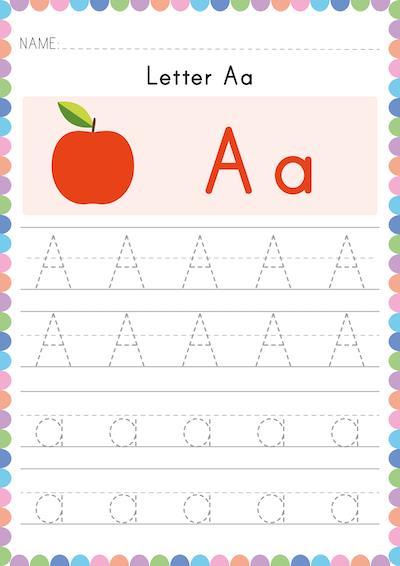- TxSpot
- Homepage
What About Tracing?

Any school-based occupational therapist can attest to the popularity of tracing worksheets as a classroom tool to aid developing writers and struggling writers. But how effective is tracing, really? We know that learning to write is a complex task. Children have to use their visual skills to recognize that a drawing or symbol represents a letter, recognize that letter in its many different forms in text, create a mental picture of the letter in their memory, make a motor plan of how to form it themselves, and coordinate their brains and hands to execute that motor plan.
Recent studies have used functional magnetic resonance imaging (fMRI) to better understand which parts of the brain are most used during a specific task. Studies that have looked at tasks related to reading or writing indicate clear differences in brain activation. Specifically, studies have used fMRI to study what is occurring in the brain when children see, type, or trace a letter, compared to when they free write a letter. When children free write letters, the areas of the brain responsible for reading and writing are highly activated (lit up). In contrast, when children see, type, or trace letters, these areas are not activated.
When tracing, children tend to focus on the individual letter segments and on their ability to adhere to the lines, instead of focusing on the letter as a whole. They often start tracing at different points on the letter, and may not start at the same place each time. For these reasons, the act of tracing does not help children develop a mental representation of a letter, or develop form constancy, which is the understanding that a letter stays the same, even when it changes size, font, or case, in the way that free writing does. When free writing, children learn that their letter “A" may not look exactly alike each time they write it, and may not look exactly like the model, but it is still an “A." Furthermore, tracing a letter does not allow a child to develop a motor plan for the letter as a whole, which is important for writing with automaticity and fluency. Most children can overcome the limitations of tracing and learn to write fluently; however, children with poor visual-motor skills are likely to struggle, and may produce letters that are slow and labored, choppy, and drawn with various starting points.
Finally, tracing worksheets are generally used as independent work activities; however, research indicates that learning handwriting should not be an independent process. Effective teaching includes guided practice that incorporates feedback from the teacher as well as the child's self-assessment.
There are several compelling reasons for occupational therapists and teachers to abandon tracing activities in lieu of other, more effective methods of learning to write. Children benefit from explicit instruction in how to form letters along with guidance and feedback provided as they practice free writing. Children should be given frequent opportunities to practice writing letters and words in an environment that favors process over product.
Here are a few resources on tracing that may be helpful!
Why tracing is a very bad idea | Skills for Action
To Trace or Not to Trace? - The Learning Professor

